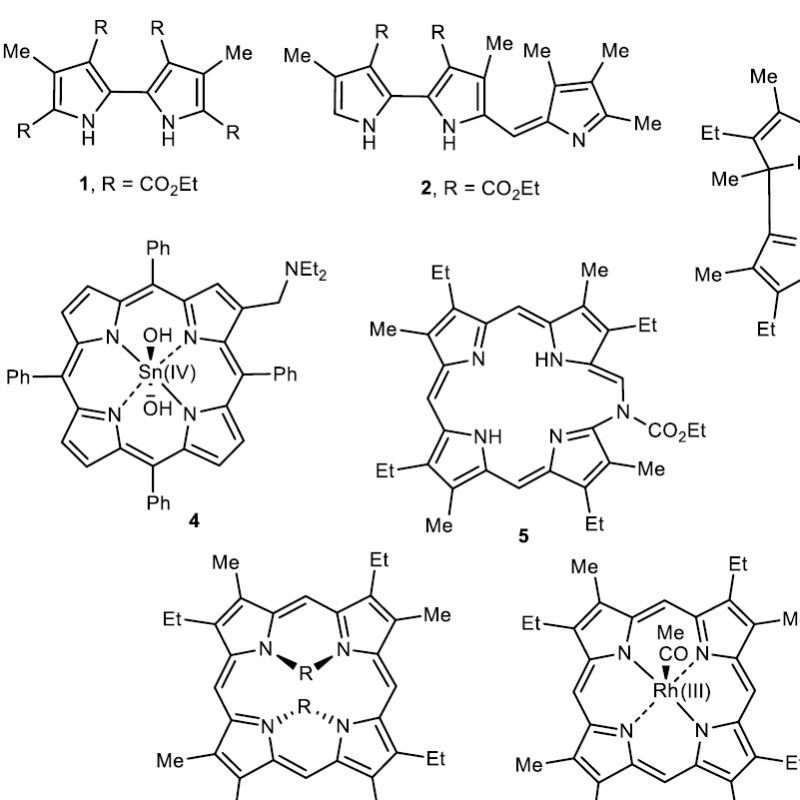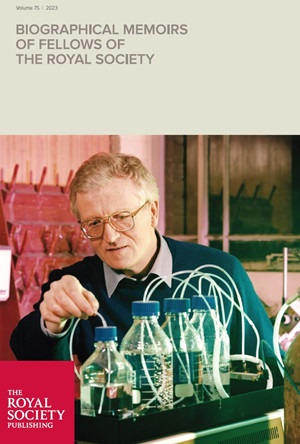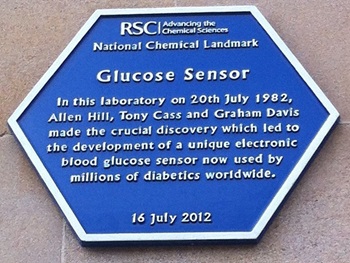Forensic science, MRI and glucose sensors—just some of the fields of achievement celebrated in the new volume of memoirs.

Highlights from the latest volume of Biographical Memoirs include pioneering chemists whose research spanned organic, inorganic and spectroscopy fields, often with prominent commercial and industry success.
Featured on this volume’s cover is organic chemist Ronald Grigg, who specialised in heterocyclic chemistry. His research had a broad range of applications, including in pharmacology and forensics. For the latter, he launched a company specialising in fingerprint detection that utilised the fluorescent qualities of a particular reagent that reacts with the amino acids left behind by the ridges of a fingerprint.
organic chemist Ronald Grigg, who specialised in heterocyclic chemistry. His research had a broad range of applications, including in pharmacology and forensics. For the latter, he launched a company specialising in fingerprint detection that utilised the fluorescent qualities of a particular reagent that reacts with the amino acids left behind by the ridges of a fingerprint.
Peter Maitlis, whose family fled Nazi Germany to the UK in the 1930s, overcame the drama of early life to become an influential organometallic chemist in academic and industry circles. John Beynon worked on weapons research towards the end of WW2 and went on to revolutionise the application of mass spectrometry in organic chemistry. Another organic chemist, Robert Ramage, was concerned with the synthesis of natural products, peptides and proteins. His work had ties with pharmaceutical research, and he also founded his own company that employed his peptide synthesis technologies.
Allen Hill’s early interest in organic chemistry evolved into the nascent field of bioinorganic chemistry. His research led to commercial success with the invention of the glucose electrode for determining blood glucose levels in diabetics.

Blue plaque installed on the Inorganic Chemistry Laboratory, Oxford, in recognition of the glucose sensor.
Kenneth Packer started out as an inorganic chemist before being drawn to nuclear magnetic resonance (NMR) and its applications—work that would span academia and industry, including a period as head of spectroscopy at BP Research. Ronald Gillespie was another distinguished inorganic chemist, known for co-creating the Valence Shell Electron Pair Repulsion (VSEPR) model for molecular geometry:

VSEPR models for water, carbon dioxide and sulphur dioxide, where the geometry is determined by the interaction of bonding pairs (bp) and lone pairs (lp) of electrons.
Beyond chemistry, another prime example of commercial success is engineer and entrepreneur Sir Martin Wood, who with his wife co-founded Oxford Instruments in 1959—the first spin-out company of the University of Oxford. With humble beginnings operating out of a garden shed, the company would go on to build the first superconducting MRI magnet for use in hospitals. Peter Lawrenson also had an attraction to electromagnets and launched a business in the production of alternative electric motors.
Volume 75 is also the 14th volume with Editor-in-Chief, Professor Malcolm Longair. Earlier this year, Malcolm reflected on his experiences and highlights.
Interested in 20th century chemistry? Sir David Clary recounts a brief history of theoretical chemistry as recorded in Biographical Memoirs.
All memoirs are published online as they are ready before being compiled into two volumes per year. Sign up for alerts or keep an eye on our website for new memoirs as they appear.
Images credits
Cover image: Ronald Grigg in his laboratory at the University of Leeds. Photographer unknown; from the Grigg family collection.
Glucose sensor blue plaque https://en.m.wikipedia.org/wiki/File:Glucose-sensor-plaque.jpg
Valence Shell Electron Pair Repulsion model. Figure 10 from https://doi.org/10.1098/rsbm.2023.0001
